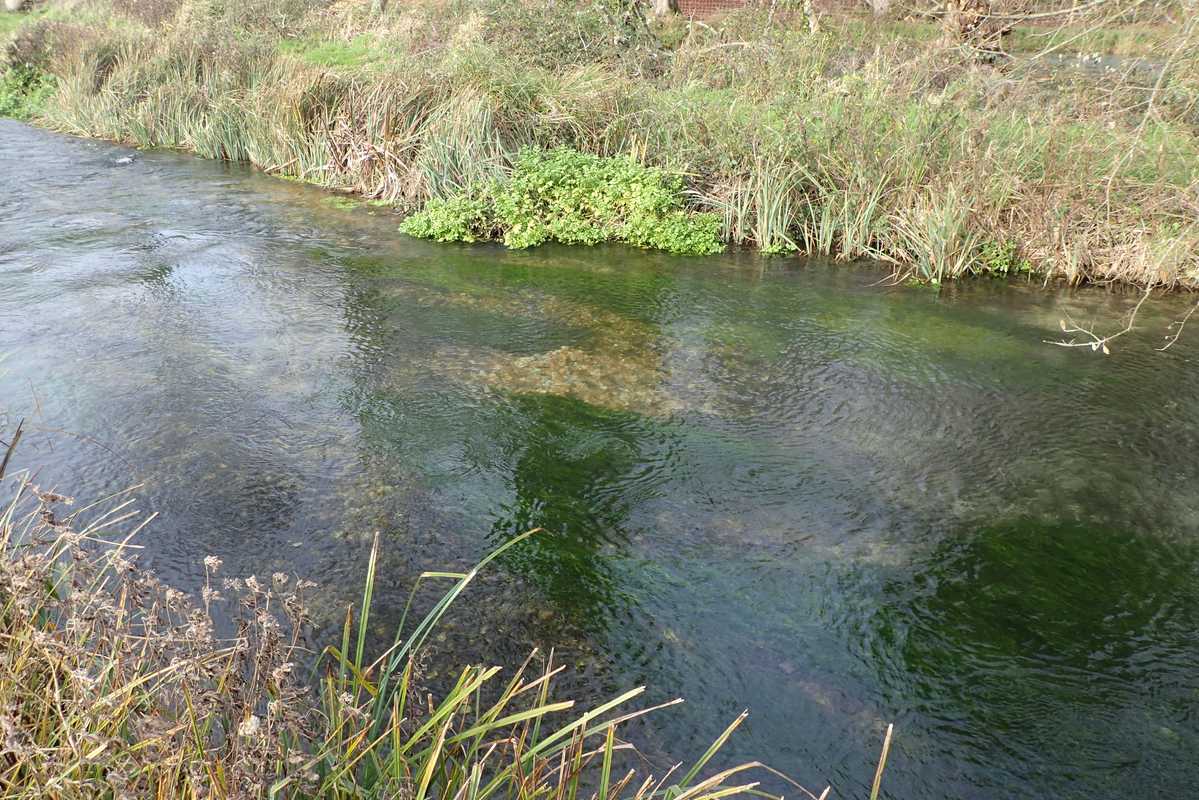In recent years we have seen a great increase in the numbers of fly anglers continuing to fish through the winter months, mostly targeting grayling and pike. Whilst this is good news for fisheries, for whom this provides a valuable income during, what are traditionally quiet months, it does mean that our rivers are seeing more and more pressure during the spawning season for trout and salmon.
The exact moment that trout and salmon choose to spawn is determined by decreasing daylight hours and falling temperatures. This means that spawning times will vary slightly from place to place and year to year, but in the UK this will usually be some point between October and January. On our southern chalk streams the peak of spawning activity generally seems to be around Christmas and into the new year. Spawning at this time means that newly hatched fry can take advantage of the better feeding opportunities that Spring brings with it, giving them the best chance of survival.
This means it is extremely important for anglers to be able to recognise, and avoid disturbing, areas where trout and salmon have spawned. Of course, it is not just wading fishermen who find themselves in rivers over the winter. Whilst it is certainly too cold for the vast majority of us to want to take a dip, your dog might think otherwise. Whether it is wading boots or paws, spawning grounds must be left undisturbed to ensure that trout and salmon eggs have the best chance of survival and we hope that this article helps you understand what to look out for.
What is a redd and what do they look like?
Put simply, a redd is a trout or salmon nest. They are created by the hen fish (the female), who turns on her side and uses her tail and body to create an oval shaped depression in gravel on the riverbed. This is where she will lay her eggs before the cock fish (the male) quickly moves in to fertilise them. Then the hen fish will once again use her tail to shift gravel, covering the eggs so they remain safely in the redd until they hatch.
A fresh redd is generally very simple to spot. When the hen fish digs a redd she disturbs any fine sediment and algae from the gravel. This means the redd is lighter in colour than the surrounding gravel, making it stand out. Redds vary in size depending on the fish that digs them, so a smaller trout might only have a redd 30-50cm in size whilst a big salmon or seatrout redd can be more than a metre across.
It is important to remember that the redd will darken in colour again and relatively quickly be the same colour as the rest of the riverbed. At this point they are less obvious, but still recognisable as an oval shaped depression in the riverbed. Immediately downstream of the depression there will be a hump of gravel that the hen fish has shifted to make the redd. Even if you are unsure, it is best just to avoid any areas you think might be redds.
Where are you likely to see redds?
Trout and salmon require gravel and a good flow to spawn. So, the key areas for spawning are shallower and with a clean gravel bed, typically at the tail end of a pool or sometimes on a riffle. The flow must be strong enough to ensure that sediment does not settle on the redd. Gravel size is also important with trout preferring gravel roughly 20-40mm. Salmon, being larger, can cut redds in gravel of 60mm+.
Areas of river that provide these conditions are where you are most likely to see redds. However, it is important to remember that if ideal spawning habitat is in short supply then trout and salmon may use areas where conditions are sub-optimal. This means it is important to keep an eye out even if a stretch of river does not look perfect for spawning.
From a fishing point of view, avoiding redds is made all the easier as the best spots to catch pike and grayling are generally not the areas where redds are likely to be. Pike much prefer areas of slack water, whilst grayling are more commonly found in deeper glides with a steady flow. But it is still important to be vigilant, especially if wading between spots.
If you are out and about on the river this winter and spot a redd why not share a photo with us on twitter
@WessexRivers using the hashtag
#ReddAlert.

